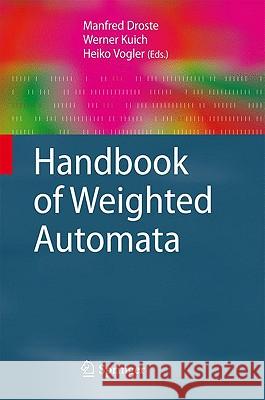Handbook of Weighted Automata » książka
Handbook of Weighted Automata
ISBN-13: 9783642014918 / Angielski / Twarda / 2009 / 628 str.
Handbook of Weighted Automata
ISBN-13: 9783642014918 / Angielski / Twarda / 2009 / 628 str.
(netto: 883,85 VAT: 5%)
Najniższa cena z 30 dni: 886,75
ok. 22 dni roboczych.
Darmowa dostawa!
The purpose of this Handbook is to highlight both theory and applications of weighted automata. Weighted ?nite automata are classical nondeterministic ?nite automata in which the transitions carry weights. These weights may model, e. g., the cost involved when executing a transition, the amount of resources or time neededforthis, ortheprobabilityorreliabilityofitssuccessful execution. The behavior of weighted ?nite automata can then be considered as the function (suitably de?ned) associating with each word the weight of its execution. Clearly, weights can also be added to classical automata with in?nite state sets like pushdown automata; this extension constitutes the general concept of weighted automata. To illustrate the diversity of weighted automata, let us consider the f- lowing scenarios. Assume that a quantitative system is modeled by a classical automaton in which the transitions carry as weights the amount of resources needed for their execution. Then the amount of resources needed for a path in this weighted automaton is obtained simply as the sum of the weights of its transitions. Given a word, we might be interested in the minimal amount of resources needed for its execution, i. e., for the successful paths realizing the given word. In this example, we could also replace the "resources" by "pro?t" and then be interested in the maximal pro't realized, correspondingly, by a given word.











